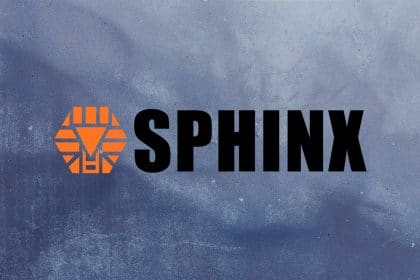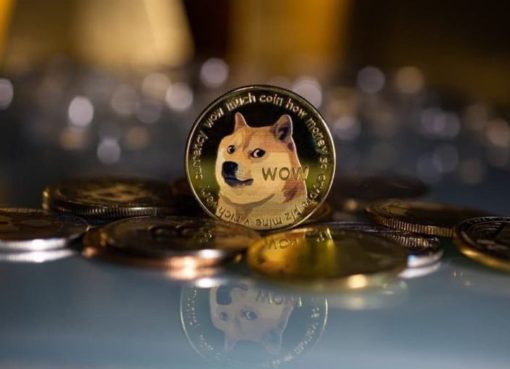SPHINX is a new generation of cross-chain oracle that provides accurate and comprehensive asset prices for BSC and the multi-chain ecosystem.
What can a modern oracle solution offer to you? We’ve discussed this and many other questions with the Sphinx project team.
What does SPHINX offer to users and what are the benefits of using it?
Sphinx Project Team: There is a considerable difference between the operational logic of the encrypted world and the real world. As the infrastructure of the encrypted world, the oracle can transform external information into information that can be written into the blockchain.
SPHINX is a new generation of cross-chain oracle. Based on the high-performance public chain, BSC, we are committed to providing accurate, fast and comprehensive asset prices for BSC and the multi-chain ecosystem. SPHINX effectively guarantees the security of data through its own unique mechanism. At the same time, with the high performance of BSC, users can quickly obtain the prices of various assets on SPHINX oracle. At the same time, the data can also be used by the Dapps on Ethereum, Polkadot and other public chains through the IBC protocol.
Who is the main target audience for SPHINX?
SPT: For all Dapps that require asset prices, such as lending, binary options, de-neutralization trading platforms, futures trading platforms and other financial derivatives etc., SPHINX can be a good choice.
How does SPHINX work?
SPT: There are three roles in SPHINX system.
Miners: Provide quotations and pay commissions to get SPX tokens;
Verifier: If a quotation deviates from the market price, the verifier can trade with the quotation asset at that price to obtain profits;
Price caller: The contract or account that calls the quotation provided by SPHINX
1) The miner input the price to the quotation contract, and then input the two assets into the quotation contract according to the price ratio, and performs mining to obtain SPX token rewards.
2) After entering the asset contract, wait for T0 time. During this period, the verifier can buy the asset with the miner’s quotation. If no one makes a transaction in T0, the quotation will be accepted by the system; if the verifier is completely transacted, the price is invalid. Partial transactions are partially invalid. After this time, the assets can be retrieved.
3) The verifier needs to offer a new quotation while taking the order. The size of the new quotation is required to be beta times the size of the order. Verifiers do not have to pay commissions when taking orders, and do not participate in mining rewards. Verifiers can not only take orders for miners’ quotations, but also take orders for previous validators’ quotations as long as they make sure that the order size is beta times the previous. In this way, a price chain p0 -> p1 -> p2…… and an asset scale chain x0 -> x1 -> x2 …… with T0 time as the maximum quotation interval time are formed. Among them, due to the limitation of asset scale, the price chain and asset scale chain will eventually terminate due to capital constraints.
4) Finally, the block price is formed. In the SPHINX protocol, the price is recorded according to the block, and the effective quotation in the block is generated according to a certain algorithm. Assume that the effective quotation of a certain block is (p1, x1), (p2, x2) (p3, x3)…then the block price P=∑pi*xi/∑xi, if the block has no effective quotation, the previous block price will be used.
In summary, SPHINX generates a continuous price of an asset on the chain for the callers to use.
What are the main competitors of SPHINX ? What makes it unique?
SPT: LINK and BAND are the leaders in the oracle industry and they have done very well in all aspects. SPHINX faces great challenges from them, but the special mechanism also makes SPHINX unique.
First of all, SPHINX is more resistant to attack. In the design of SPHINX, tampering with the existing quotation requires the provision of assets that are twice the size of the existing quotation assets for pledge. If the new price deviates by 10% from the original price, it is necessary to stake more assets that are 10 times the size of the existing quotation. The exponential design of this product effectively prevents malicious attacks.
Secondly, SPHINX supports multi-chain and multi-asset. SPHINX has built its own oracle platform on multiple public chains, effectively helping single-chain assets to expand on multiple platforms and integrate into the ecological construction of the new public chain better and faster.
Finally, SPHINX can achieve a response in seconds while every block generate a corresponding price. The performance is synchronized with the main chain, and it can better respond to market changes.
Of course, SPHINX is not perfect, and it also faces many unexpected or extreme challenges. I hope that through the efforts of the whole team, SPHINX can provide new models and standards for the oracle industry.
Does SPHINX have its token and what are the functions of this token?
SPT: The token of SPHINX is SPX, and the main functions of SPX are:
- Used as the handling fee rewards for staking. Each quotation will cost 1% of the handling fee, which will be deposited into the bonus pool. Depositing SPX token can receive the rewards from the bonus pool on a weekly basis.
- Used to pay the cost of calling the asset price. Currently, SPHINX is in the developer testing stage, and data calls are free and open to all DAPPs. In the future, a community vote will be initiated to determine whether data calls should be charged.
- Used to vote and participate in SPHINX governance. Each SPX token represents the right of governance. Community members can use SPX token to initiate governance plans or vote on a proposal.
As the industry is actively developing, we wish to SPHINX good luck in its business journey and will stay tuned with the project’s progress.
Having obtained a diploma in Intercultural Communication, Julia continued her studies taking a Master’s degree in Economics and Management. Becoming captured by innovative technologies, Julia turned passionate about exploring emerging techs believing in their ability to transform all spheres of our life.




